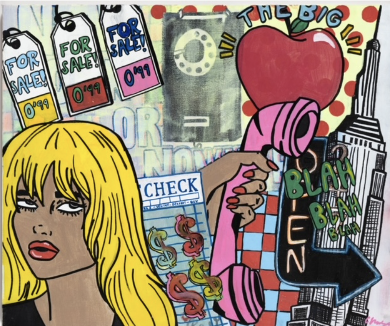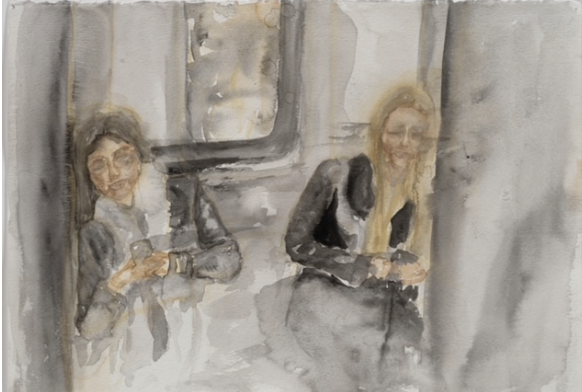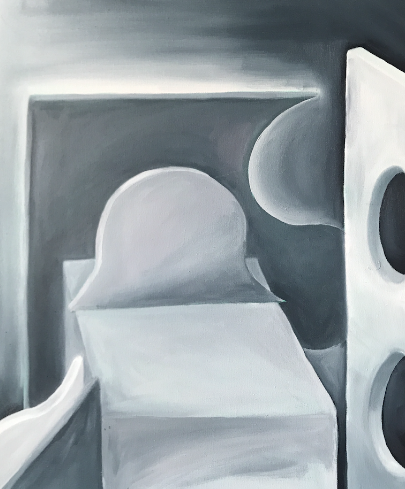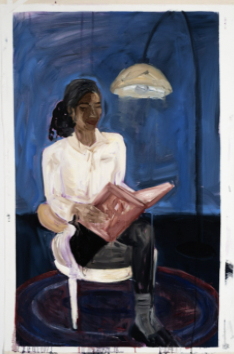While underclassmen prepare for Halloween and other childhood joys, the seniors struggle under a mountain of work: college applications. For some seniors, these applications include art portfolios, and as deadlines approach, Fieldston’s seniors finalize their picture-perfect portfolios.
Skye Wu (Form VI), one senior completing a portfolio, is part of Fieldston’s 2D art major program, in which students meet four times a week for their specific art. Over the summer she attended The Oxbow School, located in Napa, CA, a semester abroad program focused on art. Her portfolio deadline is November 1st, but she says deadlines can vary from school to school. Curating a portfolio can be a very difficult and arduous process. To Wu, it’s important to “create a very cohesive portfolio whether that is in the composition of pieces, colors or ideas and include a wide range of artworks to show how diverse of an artist you are.”
Caroline Madsen (Form VI), another 2D arts major at Fieldston, also emphasized cohesion. “Some schools want to see experimentation with different styles and techniques but also cohesion within the artist’s style,” she said. In her portfolio, she included a mix of watercolors, oils, charcoal and acrylics. For Madsen, creating her portfolio consisted of “looking back at all of my work and picking pieces that I thought went well together, exemplified my technical skill and would stand out in a pool of applicants.”
Wu and Madsen agree that having a plan and sticking to a theme is necessary. Sometimes pieces, no matter how good, just don’t fit with the rest. Wu says, “For me, even if I really loved the technique in a piece, I’ve gotten rid of it because it didn’t blend with the other pieces.”
Wu and Madsen have been working with Mr. Scott Wolfson, a painting and drawing teacher and chair of the Art Department at Fieldston. He’s been at Fieldston for 13 years and has seen countless students go through the process of creating a portfolio. To him, “The best thing to do when making a portfolio is to start early.” In the spring of student’s junior year, Wolfson begins to sit down with them and plan, but he encourages students to start thinking about their portfolios during their fall of junior year. In the spring, the planning entails reviewing pieces from the past 2-3 years, looking at their strengths and weaknesses and asking if there are any gaps left to fill. In the fall of a student’s senior year, they begin organizing and taking photos of their art. During this stage, checking specific college requirements becomes a necessity. Requirements can vary, with some schools being stricter about the amount and types of pieces one can submit. Some request five images, some ten and some even twenty. To create a stand-out portfolio, Wolfson suggests, “[Including] work that shows technical skill, a unique vision and experimentation with form and process, while also exploring related or connected themes.”
Wolfson believes that, despite the intense process, creating a portfolio is always worth it. “I think students actually find it really inspiring to take a step back and think deeply about their process and the subject matter that is meaningful to them,” he says. His advice to seniors completing portfolios or underclassmen beginning to plan is to, “Save [their] work and keep it in good condition. Get feedback from as many people as possible. Take advantage of portfolio days at individual schools or regional portfolio days. Experiment and explore different media and approaches. Be adventurous and brave.”
The workload is the one obvious downside to creating a portfolio. To combat stress, Madsen thought it was very important to, “take the pressure out of creating a ‘perfect portfolio’ and instead make pieces that were fun.” In doing so, she said she allowed herself “the freedom and joy to create whatever made [her] happy, which in the end actually led to [her] strongest and most cohesive pieces.”
Both artists plan to continue as art majors in college and intend to study art history. Wu also plans to continue using her art as a tool for activism: “Art can capture the complexities of ideas that other fields can’t do as well,” she said. In college, Madsen is considering a minor in studio art. Both plan to finish their portfolios and submit them soon.
One thing is for certain: one brush stroke at a time, Wu and Madsen are off to change the world.













